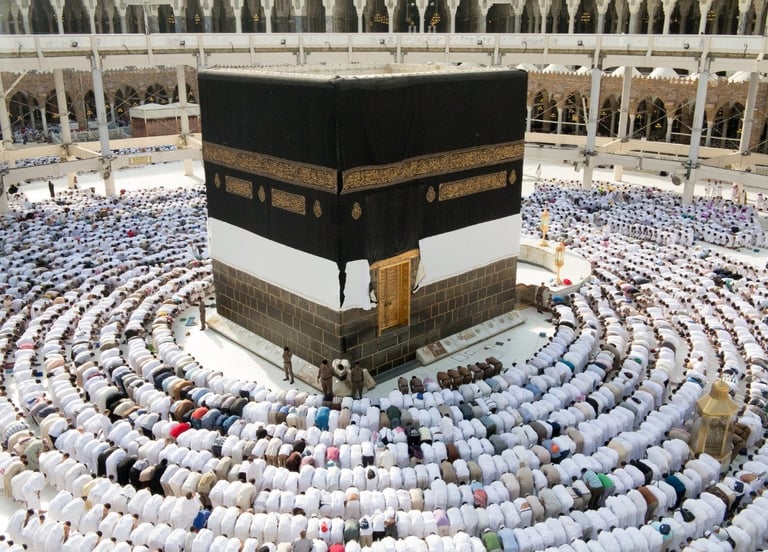Qibla: The Direction That Unites the Muslim World
What is the meaning of Qibla in Islam? What is its significance to all Muslims around the world? And what is the History behind changing the direction of it?
Eman Abdelkader
8/12/20242 min read


What is the Qibla and why is it important?
The Qibla is the direction Muslims turn to when performing their prayers (Salah). This direction points towards the Kaaba in Mecca, Saudi Arabia. Prophet Muhammad ﷺ established it, and it is followed by Muslims everywhere in the world.
The Significance of the Qibla:
The Qibla is of great importance to Muslims for several reasons:
A Symbol of Unity:
When Muslims pray, they all face the same direction, regardless of where they are. This act of turning towards the Kaaba creates a sense of unity and brotherhood among Muslims, symbolizing their Shared faith and purpose as a global community.
A Connection to Islamic History:
The Kaaba, which is the focus of the Qibla, holds significant historical value in Islam. It was built by Prophet Ibrahim and his son Ismail (peace be upon them) as the first house of worship dedicated to the One God Allah. The Qibla thus links to the origins of monotheism and the enduring message of Islam.
The Qibla is also important beyond prayer:
For example, when a Muslim dies, their body is positioned to face the Qibla. Similarly, animals are turned towards it during slaughter. It is also recommended to face the Qibla when making supplications (Duaa).
History of changing the direction of Qibla
Initially, the first Muslims directed their prayers towards the Al Aqsa Mosque in Al-Quds (Jerusalem). This remained the practice for about sixteen months after Prophet Muhammadﷺ, and his followers migrated to Madinah from Makkah. However, during a midday prayer, a divine revelation was sent to the Prophet ﷺ, instructing him to turn the direction of prayer towards the Kaaba in Makkah.
This change was met with immediate obedience from the Prophet’s Companions. One notable instance occurred in the masjid of Qubaa, where the worshippers instantly turned towards Makkah while still in the middle of their prayer upon receiving the news of the Qibla change.
This demonstrated their unwavering faith and dedication to following the commands of Allah.
The transition to face Makkah was not merely a change in physical direction; it signified a spiritual alignment with the essence of Islamic belief.
The Kaaba, being the first house of worship built by Prophet Ibrahim and his son Ismail (peace be upon them), holds profound importance and the act of facing it during prayer reinforces the unity and identity of the Muslim ummah.
How to Find the Qibla Direction?
Thanks to modern technology, finding the direction of the Qibla has become much easier. Today, various apps and online tools can pinpoint the exact direction of the Kaaba based on your location. This accuracy is crucial for Muslims to ensure their prayers are performed correctly.
Google provides a Qibla finder tool that uses your camera in this link...
https://qiblafinder.withgoogle.com/intl/en/desktop/finder
These tools are highly convenient, especially when traveling. Additionally, in many Muslim-majority countries, hotel rooms often feature Qibla indicators, such as stickers on the ceiling, to guide guests.
In conclusion, the Qibla is a fundamental aspect of Muslim worship, guiding believers in their daily prayers and symbolizing unity and faith. Whether using traditional methods or modern technology, finding the Qibla direction is a vital practice that connects Muslims to their faith and to each other.
